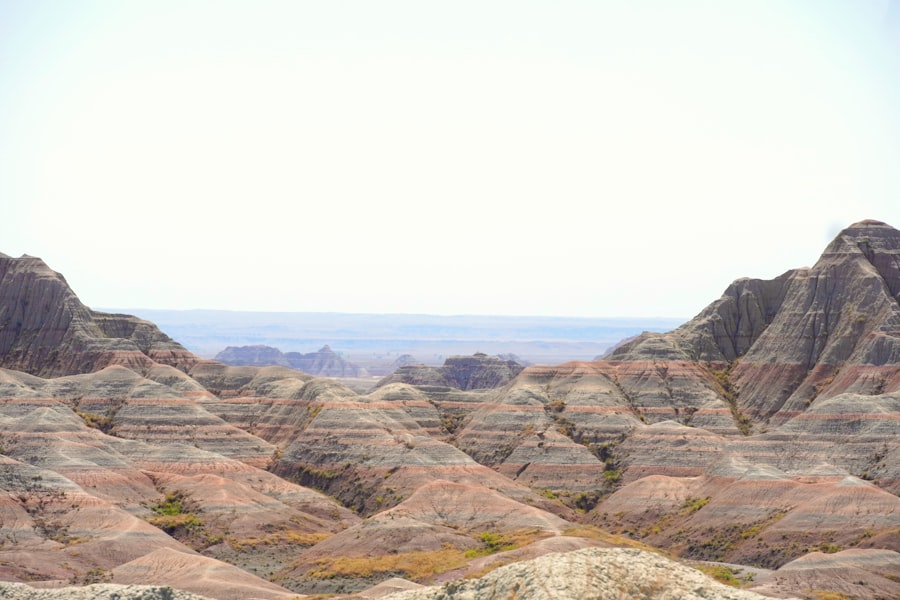Download links
How to install Exploring the Enigmatic Chocolate Hills APK?
1. Tap the downloaded Exploring the Enigmatic Chocolate Hills APK file.
2. Touch install.
3. Follow the steps on the screen.
Description
The Chocolate Hills, a geological wonder located in the Bohol province of the Philippines, have long captivated the imagination of both locals and tourists alike. Their unique conical shapes and verdant green hues that transform into rich browns during the dry season have given rise to various theories regarding their origin. One of the most widely accepted explanations is that these hills are limestone formations shaped by the forces of erosion over thousands of years.
The process began with the uplift of coral deposits from an ancient seabed, which were then sculpted by rainwater and the elements, resulting in the distinctive hills we see today. However, local folklore adds a layer of mystique to the Chocolate Hills’ origin. One popular legend tells of a giant named Arogo who fell in love with a mortal woman.
When she passed away, Arogo wept for her, and his tears formed the hills. This tale not only reflects the rich cultural tapestry of the region but also illustrates how natural phenomena can be woven into the fabric of local mythology. The combination of scientific explanation and folklore creates a compelling narrative that draws visitors to this UNESCO World Heritage Site, eager to explore its beauty and uncover its secrets.
Key Takeaways
- The Chocolate Hills in the Philippines have a mysterious origin, with local legends attributing their formation to the tears of a giant.
- The unique geological formation of the Chocolate Hills is characterized by over 1,200 cone-shaped hills, which are made of limestone and covered in green grass that turns brown during the dry season, giving them a chocolatey appearance.
- The Chocolate Hills are home to a diverse range of flora and fauna, including rare orchids, butterflies, and the endangered tarsier, making it a paradise for nature enthusiasts.
- The Chocolate Hills hold cultural significance for the local community, with the hills being a source of inspiration for folklore, music, and dance, and a symbol of unity and strength.
- Visitors to the Chocolate Hills can enjoy a variety of activities and attractions, such as hiking, ziplining, and exploring nearby attractions like the Tarsier Conservation Area and the Butterfly Garden.
- Conservation efforts are underway to preserve the natural beauty of the Chocolate Hills, including reforestation projects, waste management initiatives, and sustainable tourism practices to protect this unique natural wonder for future generations.
The Unique Geological Formation of the Chocolate Hills
The geological formation of the Chocolate Hills is a remarkable example of karst topography, characterized by its limestone hills and valleys shaped by erosion. Spanning approximately 50 square kilometers, this landscape features over 1,200 individual hills, although estimates suggest there could be as many as 1,700. Each hill rises between 30 to 50 meters above the surrounding terrain, creating a surreal panorama that appears almost otherworldly.
The hills are primarily composed of limestone, which is susceptible to weathering processes such as dissolution and erosion, leading to their distinctive shapes. The formation process is believed to have begun around two million years ago during the Pleistocene epoch. As sea levels fluctuated, marine organisms deposited calcium carbonate on the ocean floor, which eventually solidified into limestone.
Over time, tectonic activity uplifted these deposits above sea level. The subsequent erosion caused by rainwater, which is slightly acidic due to dissolved carbon dioxide, gradually wore away the softer materials surrounding the limestone, leaving behind the iconic conical hills. This intricate interplay between geological forces and time has resulted in a landscape that continues to intrigue scientists and geologists who study its formation and evolution.
Exploring the Flora and Fauna of the Chocolate Hills

The Chocolate Hills are not only a geological marvel but also a rich ecosystem teeming with diverse flora and fauna. The region’s unique topography creates microhabitats that support various plant species, including grasses, shrubs, and trees. During the rainy season, the hills are cloaked in lush greenery, while in the dry season, they take on a chocolate-brown hue, hence their name.
The dominant vegetation consists of grasslands interspersed with patches of tropical trees such as acacia and mahogany, which provide shelter and food for numerous animal species. Wildlife enthusiasts will find much to appreciate in this area. The hills are home to various bird species, including the Philippine tarsier, one of the world’s smallest primates known for its large eyes and nocturnal habits.
Additionally, several endemic species can be found in this region, contributing to its ecological significance. The presence of these unique animals highlights the importance of preserving their habitats within the Chocolate Hills ecosystem. Conservation efforts are crucial not only for protecting these species but also for maintaining the delicate balance of this biodiverse environment.
The Cultural Significance of the Chocolate Hills to the Local Community
| Aspect | Metrics |
|---|---|
| Tourism | Number of tourists visiting annually |
| Economic Impact | Revenue generated from tourism |
| Cultural Events | Number of cultural events held at the Chocolate Hills |
| Local Businesses | Number of businesses benefiting from tourism |
| Community Pride | Local community’s pride in the Chocolate Hills |
The Chocolate Hills hold profound cultural significance for the local communities residing in Bohol. For generations, these hills have been woven into the identity and heritage of the people living in their shadow. They serve as a source of inspiration for local artists and storytellers who draw upon their beauty and mystery in their works.
Moreover, the hills are integral to local folklore and traditions. Stories about their origin are passed down through generations, reinforcing a sense of community and shared history among residents.
The hills are often seen as symbols of resilience and beauty, embodying the spirit of Boholano culture. This connection to the land fosters a deep sense of pride among locals, who view themselves as stewards of this natural wonder.
Activities and Attractions for Visitors at the Chocolate Hills
Visitors to the Chocolate Hills are greeted with a plethora of activities and attractions that enhance their experience in this stunning landscape. One of the most popular ways to appreciate the hills is by visiting designated viewpoints such as the Chocolate Hills Complex or the view deck at Barangay Buenos Aires. These vantage points offer breathtaking panoramic views that allow visitors to fully grasp the scale and beauty of this natural wonder.
Photographers flock to these spots to capture stunning images that showcase the hills’ unique shapes against varying backdrops. In addition to sightseeing, adventure seekers can engage in various outdoor activities such as hiking and biking along designated trails that wind through the hills. These trails provide an opportunity for visitors to immerse themselves in nature while enjoying fresh air and stunning vistas.
For those looking for a more leisurely experience, guided tours often include visits to nearby attractions such as the Loboc River, where visitors can enjoy river cruises amidst lush tropical scenery. The combination of natural beauty and recreational opportunities makes a trip to the Chocolate Hills an unforgettable experience for travelers seeking both adventure and relaxation.
Conservation Efforts to Preserve the Natural Beauty of the Chocolate Hills

As awareness grows regarding environmental issues and climate change, conservation efforts aimed at preserving the natural beauty of the Chocolate Hills have become increasingly important. Local government units and environmental organizations have initiated various programs focused on sustainable tourism practices that minimize ecological impact while promoting awareness about conservation among visitors. These initiatives include educational campaigns that inform tourists about responsible behavior while exploring this delicate ecosystem.
Reforestation projects have also been implemented to restore native vegetation around the hills, which helps prevent soil erosion and supports local wildlife habitats. By engaging local communities in these efforts, conservationists aim to foster a sense of ownership among residents regarding their natural resources. This collaborative approach not only enhances biodiversity but also ensures that future generations can continue to enjoy and appreciate the unique beauty of the Chocolate Hills.
Through these ongoing efforts, there is hope that this iconic landscape will remain a cherished part of Bohol’s heritage for years to come.
FAQs
What are the Chocolate Hills?
The Chocolate Hills are a geological formation in the Bohol province of the Philippines. They are made up of around 1,268 cone-shaped hills, which are covered in green grass that turns brown during the dry season, giving them the appearance of chocolate kisses.
How were the Chocolate Hills formed?
The exact formation process of the Chocolate Hills is still a subject of debate among geologists. However, it is widely believed that they are the result of the uplift of coral deposits and the action of rainwater and erosion over millions of years.
What is the best time to visit the Chocolate Hills?
The best time to visit the Chocolate Hills is during the dry season, which typically runs from late November to May. This is when the grass covering the hills turns brown, giving them their chocolate-like appearance.
Are there any activities to do at the Chocolate Hills?
Visitors to the Chocolate Hills can enjoy activities such as hiking, bird watching, and taking in the panoramic views from the viewing deck. There are also ATV tours and zip lining available for those seeking a more adventurous experience.
Is there an entrance fee to visit the Chocolate Hills?
Yes, there is an entrance fee to visit the Chocolate Hills. The fee helps with the maintenance and preservation of the area.





